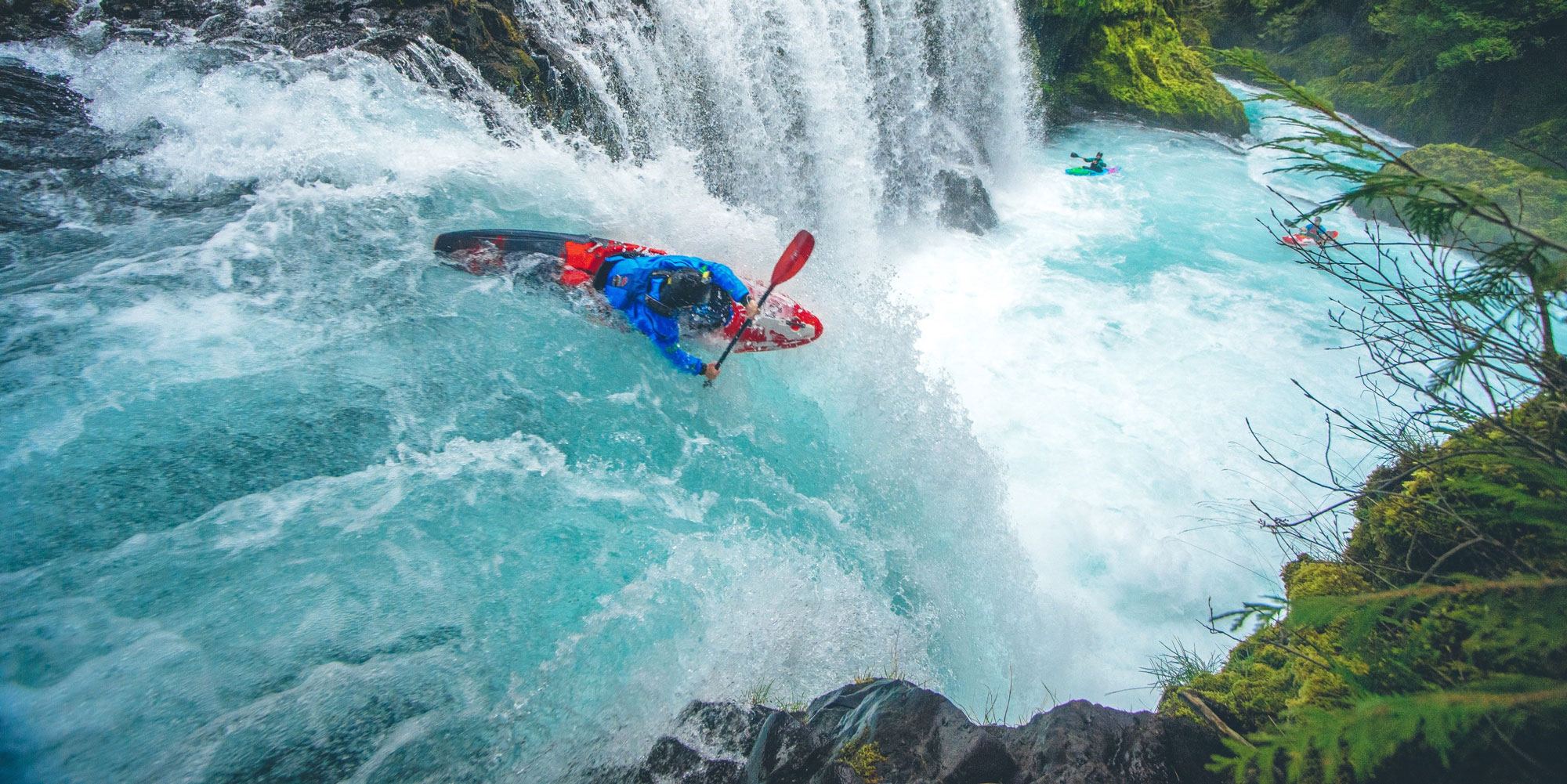When lockdown cancelled my plans for the year I succumbed to the defeatist attitude; ‘You can’t get better at kayaking, without going kayaking.’ But that’s simply not true. There’s a host of things you can do to get better at kayaking, without being on the water. When I made the commitment to work hard to be in a new place physically and mentally for when I could be back on the water, I relished the challenge.
Here are some things I was working on in lockdown and through the summer.
Power to weight ratio
Being stronger can help you in many ways but there is also no denying that most of the world’s best kayakers are on the lighter side of things. I have seen the difference between a skilled lighter kayaker and a skilled heavier kayaker making the same move and it is almost always the lighter kayaker that has the best line. I have focused too much on power over the last few years and so asides from a few days of lockdown in Warrington where I ate ice cream, drank and felt sorry for myself, I have been dieting pretty hard. I am currently 71 kg, down from 78. I am a little bit weaker when pushing weights but I feel much better in my kayak.

Flexibility
Good for injury prevention; good for longevity; good for kayaking; good for you. I hate it. My motivation to go kayaking is always at a max, with lifting weights and running not too far behind it but my motivation to sit down on a yoga mat and hold myself in painful positions is always low. I have to really force myself to do it. I have not seen a specific improvement in my kayaking but after a long day in the kayak I am no longer getting out and limping slightly because my hips are so tight.

Cardio
One season in the PNW we had the Little White river above five foot for almost a month. It was full on Fight Club in there, some of the hardest kayaking I have ever done and really highlighted that my endurance could be improved. Being out of breath and tired on the river is one of the most dangerous situations to be in. It sucks, but ultimately you have to lace up your trainers and put miles in your legs to get your heart and lungs fit. I personally think running is pound for pound the easiest / best form of cardio. Ultimately though anything that gets your heart rate up for a good chunk of time is what you need, I really enjoy circuit training and I am reliably informed that some people enjoy biking for cardio, not me, but other people.

Pre-habbing
Getting injured is just part of the game, push hard enough for long enough and it will happen to you. I have had a small niggle in my right shoulder, chronically tight hips, a sore rib, mild back pain and an injured right hand for the last few years. I now incorporate some ‘pre-habbing’ exercises into my warm ups before training off the water, as well as one day in the week just dedicated to working on my weak / painful points. I am also committing at least five minutes to warming up before getting on the river, when I train in the local MMA club we warm up for fifteen minutes (with good reason). I wonder why it’s not really a thing in kayaking? Ultimately I need to quell my excitement and impatience to get on the water and spend a little bit more time getting the blood flowing, my core temperature up and my muscles primed, in the interest of kayaking forever.
Forward paddling technique
Hard thing for me to swallow that I could be so bad at such a basic skill and that forward paddling could actually be such an art form. My torso rotation was rubbish from using short paddles and freestyle kayaks for years, my paddle angle was fortunately pretty good but my first part of the stroke was not very powerful and I have been working hard on developing that.
Imagining
A big reason why I progressed so quickly as a kid is because I spent a solid six hours a day in school day dreaming of kayaking. I use visualization to get a big line into my head, but it has been years since I have imagined just going kayaking in my head. From reviewing Gopro footage and seeing the changes I want to make, visualising it and then practicing on the water, I feel like I am moving better on the water. I doubt if anyone else will notice but to me it feels smoother and more powerful and most importantly I am riding my edges hard on every move.

Setting goals
Lockdown gave me the time to step back and think about what I want to do in a kayak. Ultimately I want to combine my freestyle and river running skills and push the free ride movement more. The goal before lockdown was to be the best kayaker I can be, the goal during and after lockdown is the same.
I always believe adversity is just an opportunity to become stronger and though it took me a while to figure out how get it done in lockdown, I am a better kayaker than I was before it.
It’s still true that the best way to get better at kayaking is to go kayaking but there’s still a lot of room for growth off the water.
Catch you on the river, Bren

